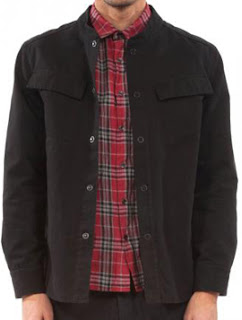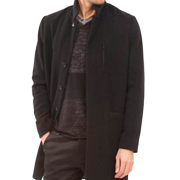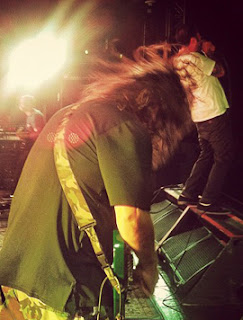All the thought that went into its durability didn't sacrifice design sensibility. The casing is retro-futuristic with an industrial edge designed to military specifications. About the only thing you can't do with an iPhone cradled inside a Taktik is submerge it. But a little water won't hurt. This is like a real Hummer. Rugged.
The Taktik transforms iPhones into tanks.
While tempted to review the Taktik like plenty of other people who were among the first to receive one fresh off the production line, I wanted to live with it for awhile. It's a good thing. Sometimes you can learn a little more with patience. First impressions are easier to shake with a three-week commitment.
Despite the allure of the video, which is one of the better gadget demos on the market, initial reactions to the product in hand will take some people aback. The Taktik is bigger, bulkier, and heavier than anything you're used to. Once encased, the iPhone feels close to twice the girth and double its weight.
Encased is the right word as some assembly is required. In this instance, the Taktik housing is fastened together by six tiny screws. Lunatik includes one spare, along with the heptagonal specialty screwdriver to lock and unlock them. It's easy to do, and you might do it more often than you think.
The casing itself is a 3.5 HSJ cover made from anodized aircraft grade aluminum, which sandwiches the iPhone between the 9mm silicone impact truss that extends beyond the two aluminum frames. The bezel is tapered, making it easier to slip in a pocket but primarily engineered to compress on impact.
The front is optionally protected by another layer of Corning Gorilla Glass, without affecting the touch screen. On the back, the silicone polymer is exposed on the back of the case. Almost every port is protected too. There is a polymer/plastic flap protecting the 30-pin connection. There is a heavy aluminum lever locking in place over the headphone jack.
The only exposed area is a small cutout for the camera and light. Even the speakers and mic are protected by water and dust resistant covers. The home, volume, and power buttons are covered by either protruding or recessed indentations in the polymer. The mute button has a push button slider.
The Taktik was designed for durability. Period.
There are some inconveniences, but most are an even trade. One common complaint right out of the box is that the polymer covered buttons feel stiff and require some heavy pushing. This becomes a myth in a few weeks. Like a pair of new jeans, functionality opens up with normal wear.
Likewise, it doesn't take long before the weight and girth feel familiar (except inside suit and jacket pockets). But the trade off is even. The additional girth makes the iPhone easier to use as a camera (but not with the SlingShot) and the polymer adds traction.
More troublesome is the polymer casing around the 30-pin connector. Depending on the dock or plug, the opening will be too snug for some connectors. (The one on my television included.) Extensions will work, but sometimes even these require finesse as the polymer opening is pliable and bows slightly.
The company says that the snug fit is related to durability design. It seems more likely that, much like the headphone jacks, Taktik was designed to accommodate whatever comes out of the box as opposed to third-party accessories. Slightly larger openings wouldn't have had an impact.
Although it is nominal, it does diminish connectivity on outgoing calls and shortens the distance for WiFi. It's not significant, but worth noting. More challenging is the bevel aluminum around the glass. Because the glass is inset, screen touch points around the edges and corners aren't as accessible.
The Taktik By Lunatik Covers 6.2 On The Liquid Hip Richter Scale.
All in all, the Taktik was designed for people who have active lifestyles and hazardous occupations or spend time in unforgiving environments. This is where the Taktik gets the job done, giving the best protection possible for people who always feel like their iPhone is at risk. Hands down, it wins in this category (even after being tested according to military standards).
It could have scored higher, but it does lose a little ground as an all-around cover. Harkening back to the Hummer comparison, it's too much case for someone who never goes off road. And yet, it's undeniably cool. The Taktik for the iPhone 4/4S and iPhone 5 is available on the Lunatik site or you can order it on Amazon (sometimes at a discount). Almost all mix and match colors are available.
![Liquid [Hip]](https://blogger.googleusercontent.com/img/b/R29vZ2xl/AVvXsEjAFBQPqS7J0-rrttNoRYSsuwIePPZf4Nq6sqDioK1zzVQXJIQXKzq_NVNI4n6h3inuRQFBKOcJeZeSufkdHHIOxbSWyBjTjTxgKEQGyPzdwvkEEeECh4bI5YEGk4RWGUINSd7vulPQsCA/s1600-r/liquidhip.jpg)





























